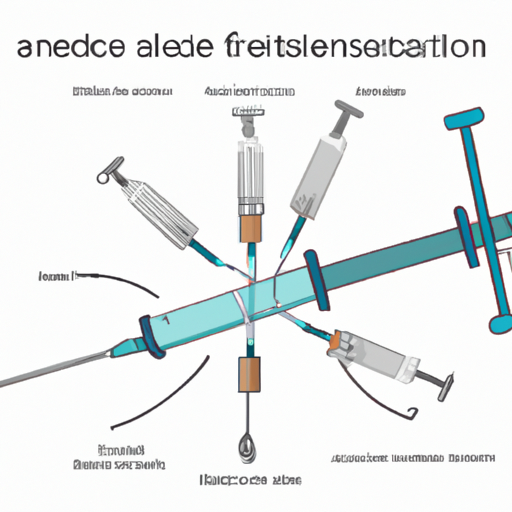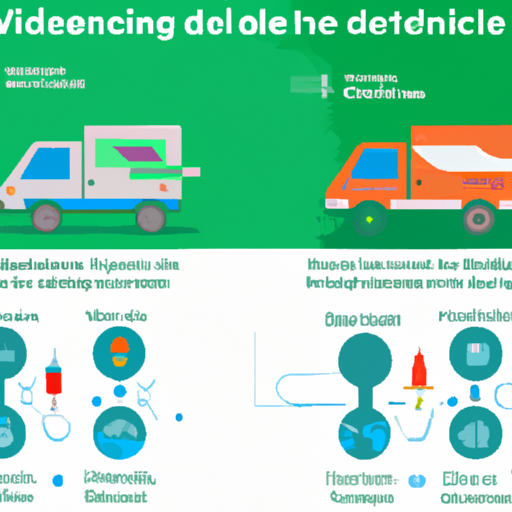The Advantages of Needle Free Injection
The blog post explores the benefits associated with the use of Needle Free injections, a revolutionary technology that is transforming the field of medicine. The article aims to highlight how this innovative approach can enhance patient comfort, reduce the risk of cross-contamination, and improve vaccine delivery.
A Pain-Free Experience: How Do Needle Free Injections Work?
Needle Free injections offer a revolutionary approach to medical procedures by eliminating the discomfort and fear associated with traditional needle injections. These innovative devices use various mechanisms to deliver medication or vaccines into the body without the need for a needle. One such mechanism involves using a high-pressure stream of fluid to penetrate the skin and deliver the medication directly into the underlying tissue. Another method utilizes a fine jet of medication that is propelled through the skin using compressed gas.
The key advantage of Needle Free injections is the pain-free experience they provide. Traditional injections can be a source of anxiety for many people, especially those with a fear of needles. The thought of feeling a sharp prick can cause distress and lead to avoidance of necessary medical procedures. Needle Free injections offer a solution to this problem by delivering medication in a way that minimizes discomfort. The high-pressure stream or fine jet of medication is often described as a sensation similar to a light tap or a slight pressure on the skin, making the experience much more tolerable for patients of all ages.
Furthermore, Needle Free injections have shown promise in reducing the occurrence of side effects associated with traditional injections. Some individuals experience bruising, bleeding, or infection at the injection site due to the penetration of the skin by a needle. With Needle Free injections, the risk of these complications is significantly reduced as there is no puncture wound. This not only improves patient comfort but also enhances the overall safety of the procedure.

An illustration showing the mechanism of a Needle Free injection
Safety First: Can Needle Free Injections Reduce Cross-Contamination?
Needle Free injections not only offer a pain-free experience but also provide significant advantages in terms of safety and reducing the risk of cross-contamination. This is particularly important in healthcare settings where the transmission of infections can occur through contaminated needles.
- 1. Eliminating Needlestick Injuries:
One of the primary safety concerns with traditional needle injections is the potential for healthcare workers to suffer needlestick injuries. These injuries can result in the transmission of bloodborne pathogens such as HIV or hepatitis B and C. By eliminating the use of needles, Needle Free injections greatly reduce the risk of accidental needlestick injuries, ensuring the safety of healthcare professionals and minimizing the potential for infection transmission. - 2. Preventing Cross-Contamination:
Another advantage of Needle Free injections is their ability to reduce the risk of cross-contamination between patients. In healthcare settings, the same needle is often used multiple times, increasing the likelihood of contamination and the spread of infectious diseases. With Needle Free injections, each patient receives a sterile, single-use device, eliminating the risk of cross-contamination and ensuring the highest level of safety for patients. - 3. Improved Infection Control:
Needle Free injections also offer improved infection control measures compared to traditional injections. The use of needles requires proper disposal protocols to prevent accidental needlestick injuries and reduce the risk of infection spread. With Needle Free injections, the need for safe disposal of used needles is eliminated, simplifying infection control procedures and reducing the chances of mishandling or improper disposal.
"The future of vaccine delivery: Are Needle Free injections the answer?"
The future of vaccine delivery holds great promise, and Needle Free injections may just be the answer we've been waiting for. Vaccines play a critical role in preventing the spread of infectious diseases and protecting public health. However, the traditional method of vaccine administration through needles can be intimidating, particularly for children and individuals with needle phobia.
Needle Free injections offer a potential solution to these challenges by providing a more patient-friendly and efficient approach to vaccine delivery. These innovative devices use high-pressure systems or jet injectors to administer the vaccine through the skin, bypassing the need for needles. This not only eliminates the fear and discomfort associated with traditional injections but also offers the potential for improved vaccine uptake rates.
Additionally, Needle Free injections have the potential to address some of the logistical challenges faced in vaccine delivery. In resource-limited settings or during emergency vaccination campaigns, the availability of trained healthcare professionals to administer injections may be limited. With Needle Free injections, trained personnel may not be required, as these devices are designed to be easily self-administered or administered by minimally trained individuals. This can greatly expand the reach of vaccination programs and ensure that more people have access to life-saving vaccines.
Furthermore, Needle Free injections offer potential benefits in terms of vaccine stability and storage. Some vaccines are highly sensitive to temperature fluctuations and require specific storage conditions to maintain their efficacy. Needle Free injection systems can be designed to deliver vaccines in a freeze-dried or powdered form, which can improve stability and reduce the need for cold chain storage and transportation, making vaccines more accessible in remote or resource-constrained areas.

An infographic comparing traditional and Needle Free vaccine delivery methods
Cost-Effectiveness: Are Needle Free Injections Economically Viable?
The economic viability of Needle Free injections is an important consideration when evaluating their potential impact on healthcare systems. Let's explore this aspect in three subheadings:
- 1. Reduced Healthcare Costs:
One of the key advantages of Needle Free injections is the potential for cost savings in the healthcare sector. Traditional needle-based injections require the use of single-use needles and syringes, which can contribute to significant expenses over time. In contrast, Needle Free injection systems often utilize reusable components, reducing the need for constant restocking of disposables. This can result in substantial cost savings for healthcare facilities, particularly in high-volume vaccination settings. - 2. Increased Efficiency and Productivity:
Another factor contributing to the cost-effectiveness of Needle Free injections is the potential for increased efficiency and productivity. Traditional injections can be time-consuming, requiring healthcare professionals to prepare and administer each dose individually. In contrast, Needle Free injection systems can be designed to deliver multiple doses rapidly, reducing the time required for vaccine administration. This can free up healthcare professionals to attend to other patient care tasks, improving overall productivity and potentially reducing labor costs. - 3. Improved Vaccine Coverage and Prevention:
Cost-effectiveness is not solely about reducing expenses but also about maximizing the impact of healthcare interventions. Needle Free injections have the potential to improve vaccine coverage rates, leading to better prevention of infectious diseases. By eliminating the fear and pain associated with needles, Needle Free injections may encourage more individuals to seek vaccination, particularly those who may have previously avoided it due to needle phobia. Higher vaccination rates can result in reduced healthcare costs associated with treating vaccine-preventable diseases, as well as the societal costs of outbreaks and epidemics.
In conclusion, Needle Free injections present an innovative and safer method for the administration of medications and vaccines. The advantages are numerous, ranging from increased patient comfort to a significant reduction in needle-stick injuries and cross-infections. As the technology continues to evolve, it stands to revolutionize healthcare delivery, making treatment more accessible and less intimidating for patients worldwide.